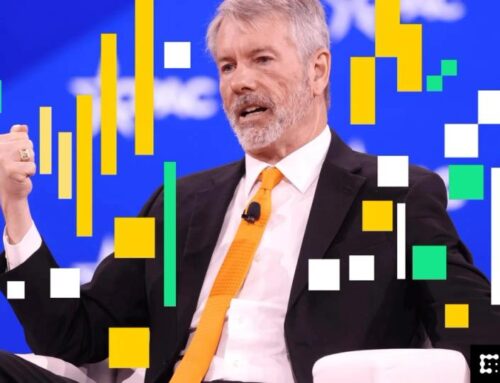Ethereum quietly flips the switch on Pectra
May 7, 2025
This is a segment from the 0xResearch newsletter. To read full editions, subscribe.
Ethereum’s most ambitious upgrade since the Merge is now live.
The Pectra hard fork, which activated smoothly shortly after 6 am ET, delivers a powerful set of upgrades to Ethereum’s execution and consensus layers, affecting everything from validator operations to transaction UX and data availability.
The upgrade introduces several important features, grouped roughly into three categories:
This upgrade lets EOAs temporarily behave like smart contracts, opening the door to batched transactions, stablecoin and sponsored gas payments — a massive UX unlock, according to Hart Lambur, co-founder of Risk Labs (which built Across and UMA).
For example, “users will be able to sign a single intent that seamlessly triggers actions across chains — no need for native gas, no extra wallet setup and no extra developer work,” Lambur told Blockworks. “It gets us closer to a world where bridging is invisible and cross-chain coordination just happens under the hood.”
By doubling blobspace capacity from six to 12 blobs per block, Ethereum increases throughput for rollups and reduces L2 fees. But as Ansgar Dietrichs pointed out, saturation of this new capacity would be good for Ethereum, provided it can continue scaling bandwidth to avoid too much fee pressure as demand grows.
Pectra raises the maximum effective validator balance from 32 ETH to 2,048 ETH, which Alluvial co-founder Matt Leisinger calls “a meaningful unlock for institutions.”
“Institutions can now autocompound rewards natively — no more skimming and aggregating 32 ETH to stay efficient,” Leisinger told Blockworks.
Bohdan Opryshko at Everstake thinks it may be the “most institution-friendly update yet.” He notes EIP-7002 also allows validators to exit using execution-layer controls, reducing trust assumptions for stakers and protocols alike — altogether making “staking at scale with operational clarity” possible for more conservative capital.
Pectra sets the stage for Fusaka, Ethereum’s next major upgrade — now tentatively pushed to 2026. That fork is expected to introduce PeerDAS, a more efficient data availability sampling scheme for rollups, and continue laying the groundwork for future upgrades like Verkle trees and full account abstraction.
But in the coming months, attention will shift to ecosystem adoption as teams try to showcase the real-world capabilities of the upgrade.
How will wallets, L2s and dapps move to support EIP-7702? We can expect features like batched transactions, gas sponsorship and stablecoin fee payments.
According to OP Labs’ Sam McIngvale, “apps drive this adoption curve.”
“Wallets will follow once there’s clear demand,” McIngvale told Blockworks. “If widely adopted, 7702 could finally make one-click onboarding and abstracted UX the norm.”
Now that rollups can post more data to Ethereum cheaply, how long will it take to saturate that bandwidth? This could have consequences for rollups’ adoption of alternative DA layers such as EigenDA, Celestia and Avail. If L2 activity fails to match blob supply, scaling momentum could stall. Conversely, if demand rises too quickly, Ethereum may need to accelerate PeerDAS or further blob increases to prevent bottlenecks.
Large operators can collapse thousands of validators into a few, but testnets couldn’t simulate how much that will improve efficiency, so it will be interesting to observe the concrete effects.
Solo stakers may benefit indirectly, according to Preston van Loon, a core developer with Offchain Labs. Fewer attestations from consolidated validators means lower network bandwidth requirements. “It really does help everybody,” van Loon told Blockworks. “It’s hard to say which group has the outsized benefit.”
Dashboards tracking validator set composition, message propagation and slashing rates will become key indicators.
The “unpredictability of network behavior” may be a risk in the future, MIT professor and Optimum co-founder Muriel Médard warned. “As blob sizes and message throughput increase, Ethereum’s ability to propagate data efficiently and predictably will define how far it can scale,” Médard told Blockworks.
Considering the fork involved more EIPs than any prior upgrade, Pectra’s quiet launch may signal just how much Ethereum has matured as a decentralized protocol. Still, the protocol has a long way to go and faces more competition than ever.
Get the news in your inbox. Explore Blockworks newsletters:
- Blockworks Daily: Unpacking crypto and the markets.
- Empire: Crypto news and analysis to start your day.
- Forward Guidance: The intersection of crypto, macro and policy.
- 0xResearch: Alpha directly in your inbox.
- Lightspeed: All things Solana.
- The Drop: Apps, games, memes and more.
- Supply Shock: Bitcoin, bitcoin, bitcoin.
Search
RECENT PRESS RELEASES
Related Post




